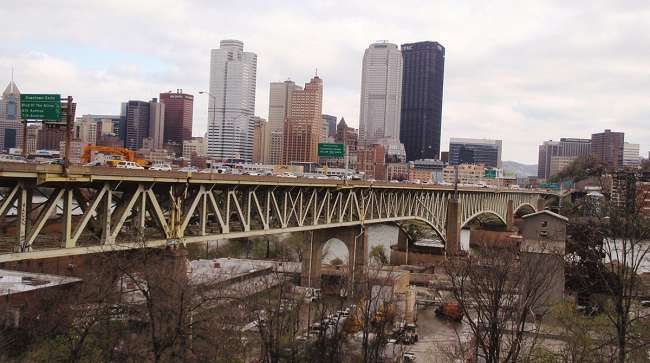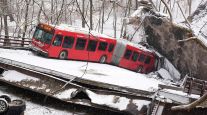Senior Reporter
FHWA Extends Comment Period on Bridge Inspections Proposal

[Stay on top of transportation news: Get TTNews in your inbox.]
The Federal Highway Administration has extended until March 13 the public comment period on its proposed rule to improve oversight of U.S. bridge inspections by incorporating a risk-based approach and encouraging the use of such technological advancements as unmanned aerial systems and sonar.
In a public announcement issued earlier this month, FHWA said it believes the extension will allow “interested parties sufficient time to review and provide comprehensive comments” on its Nov. 12 proposal. The original deadline was Jan. 13.
The proposed rule seeks to comply with provisions contained in MAP-21. That 2012 transportation reauthorization law established new requirements for the National Bridge Inspection Standards program, maintaining a bridge inventory, and reporting to FHWA bridge inspection results — especially, critical findings of structural or safety-related deficiencies. The new rule also would require the agency to address “ambiguities” identified since the last update to the program in 2009.
Bridge Notice, Federal Regi... by Transport Topics on Scribd
“Periodic and thorough inspections of our nation’s bridges are necessary to maintain safe bridge operation and prevent structural and functional failures,” said the agency’s Federal Register NPRM post. “In addition, data on the condition and operation of our nation’s bridges is necessary for bridge owners to make informed investment decisions as part of an asset management program for their bridges.”
The sweeping proposal applies to all highway bridges on all public roads, on and off federal-aid highways that include tribally and federally owned bridges and privately owned bridges that are connected to a public road on each end.
“In this day of significant technological advancements, other disruptive technologies will be developed that will change the way inspectors perform bridge inspection,” the proposal said. “Two recent examples of new technologies that FHWA is evaluating are sonar technologies for underwater bridge inspection and unmanned aerial systems.”
The agency also proposes to repeal two regulations deemed outdated: the Highway Bridge Replacement and Rehabilitation Program and the Discretionary Bridge Candidate Rating Factor.
According to the most recent estimate by the American Road and Transportation Builders Association, 47,052 of America’s 616,087 bridges are “structurally deficient” and in poor condition, and 235,000, or 38%, need repair, replacement or major rehabilitation.
A 2018 report by ARTBA’s Bridge Policy & Promotion Council concluded that although the number of structurally deficient bridges is down compared with 2017, the pace of improvement has slowed compared with the prior five years.
“The National Bridge Inspection Standards program has a history of using a one-size-fits-all approach by requiring routine inspection to typically occur every 24 months, nonredundant steel tension member inspections every 24 months and underwater inspections every 60 months,” FHWA said.
2019 ARTBA Bridge Report by on Scribd
“By using a risk-based process, FHWA proposes to allow those inspection intervals to potentially be extended up to 72 months, 48 months, and 72 months, respectively,” the assessment report said.
Early comments filed on the agency’s website were generally supportive of the new approach to ensure bridge safety, but some expressed concern over the cost of making the changes.
The National Transportation Safety Board commented that it is encouraged by the changes to the inspection standards proposal, “particularly those that concern holding bridges that carry traffic from a public roadway to the same inspection standards as public highway bridges, making bridge inspection intervals dependent on risk-based assessments, requiring load ratings (and the installation of load posting signs) to be completed in a timely manner, and making use of technology to improve bridge inspection processes.”
But Jonathan Olson, an Indiana consultant bridge inspector, said the proposed specifications for the National Bridge Inventory will take a “massive amount of time and money for states to update their databases.”
“However, it will be far superior in the long run due to increased flexibility, better and more relevant data, and better coding guidance,” Olson wrote.
“FHWA is proposing to significantly increase the amount of data and forms generated and collected,” the U.S. Forest Service wrote. “In lieu of the specific submittals at specific times and with FHWA reaching for more oversight, will there be alternative ways of meeting those submittal requirements?”
Want more news? Listen to today's daily briefing:


